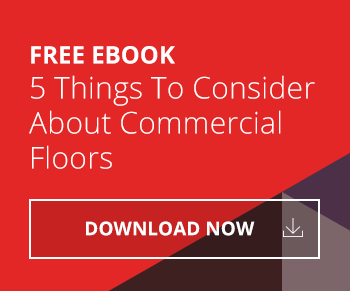Over the past decade, polished concrete has been slowly disrupting the commercial floors industry and for good reason. Namely, it’s aesthetically pleasing, sustainable, and easy to maintain. It’s at least a $300 million industry today.
Often, polished concrete is paired with carpet tile, creating carpeted islands where employees work and meet amidst a sea of concrete. It can be found in lobbies and reception areas to back-of-house areas across all sectors but primarily lives in corporate and retail environments.
Concrete usage in non-traditional environments began as part of the green movement. It’s a sustainable product due to its long life cycle, neutral impact on indoor air quality, and positive impact on lighting costs due to its reflective properties. It can be overlaid with another floorcovering at the end of its life, rather than head to a landfill, earning it even more LEED points.
Concrete usage in non-traditional environments began as part of the green movement.
There are lots of design options available for concrete floors and overlays. Anything from trowel-cut patterns in the floor to inserted brass or zinc strips. Stains can be used to create the look of marble or wood. Colors can be added into the mix of a new pour. It can even be used on your walls! Who knew concrete was so customizable?
As with all things, there are some disadvantages to polished concrete such as poor acoustics, susceptibility to cracks, increased slip/fall hazards, and walking discomfort. There are lots of alternatives when it comes to achieving that concrete look – LVT, porcelain, laminate, and carpet are all capable of replicating it. However, nothing beats the real thing!





Comments